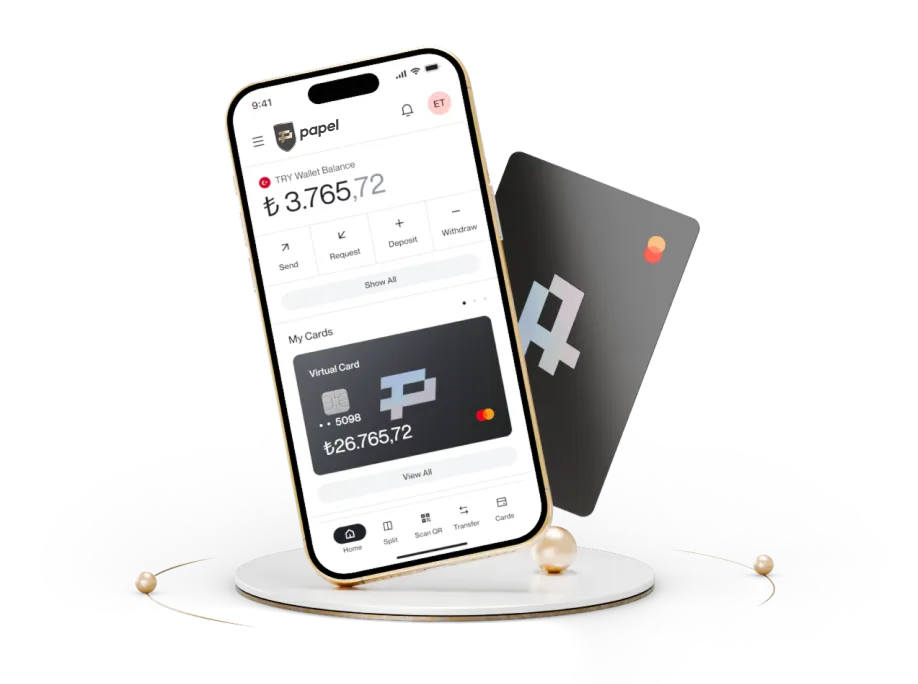Is Cash on Delivery Safe for Online Shopping?
Even though digitalization has diversified payment methods, “cash on delivery” (COD) remains one of many consumers' most practical and secure options. cash on delivery provides a safer way to complete a purchase, especially for those who prefer not to share their card information online or lack access to digital payment infrastructure. In this Papel Blog post, we explore what cash on delivery is, who it’s suitable for, its advantages and disadvantages, how to make cash on delivery safer, and what alternative payment options exist.
What is cash on delivery?
Cash on delivery is a payment method commonly used for purchases made on e-commerce platforms. It allows the customer to pay for the product upon delivery. This method is ideal for customers who do not use credit cards or prefer not to make payments online. The process starts when the customer selects cash on delivery as the payment option during checkout. The seller then ships the product via a courier company, and the customer pays in cash or via a mobile POS device (with debit/credit card) upon receiving the package. The courier company then transfers the collected amount to the seller, deducting a service fee. Working with a reliable courier service is crucial for businesses using this method.
Advantages and disadvantages of cash on delivery
Cash on delivery is especially ideal for individuals who do not use credit cards or avoid online transactions. The method offers several benefits for both buyers and sellers:
Advantages of cash on delivery
With cash on delivery, customers can shop securely without sharing credit card details, reducing the risk of fraud. Another advantage is the ability to inspect the product upon delivery and reject it without payment if it’s damaged or not as expected. This method also enables individuals without bank or credit cards to shop safely.
For sellers, cash on delivery allows access to a broader customer base, including those who avoid digital payment methods. It also eliminates the risks associated with online payments, such as fake or fraudulent transactions.

Disadvantages of cash on delivery
Despite its benefits, cash on delivery also presents some drawbacks:
Courier companies may charge additional fees for cash on delivery services. Since the delivery personnel handles the interaction during payment, there’s a risk of poor customer experience.
Most of the disadvantages affect the seller. One significant risk is when a customer refuses to accept the package at the time of delivery. In such cases, the seller bears the return shipping and handling costs. Additionally, incorrect delivery addresses can lead to failed deliveries and extra fees. High return and cancellation rates can also disrupt inventory management and increase labor and operational expenses.
How to ensure safe cash on delivery
Both parties must secure the cash-on-delivery process to minimize the risks and disadvantages mentioned above. Key precautions include:
Choose reliable sellers
Selecting a trustworthy seller is essential for all purchases, not just cash on delivery. Customers should check reviews and ratings before buying from any e-commerce platform.
Confirm orders and track shipments
Order confirmation and tracking are critical in cash-on-delivery transactions. To avoid unnecessary costs, sellers should contact the customer to confirm the order and obtain final approval before shipping.
Work with reputable courier companies
Couriers play a crucial role in the cash-on-delivery process. Choosing a reliable logistics partner ensures smooth delivery and payment collection.
Never deliver before receiving payment
To avoid fraud, businesses should never hand over the product before receiving payment.
Verify delivery address
Accurate recipient and address details are essential. Double-checking this information helps prevent failed deliveries and ensures timely payment collection.
Establish a clear return policy.
Sellers must have a clear and transparent return policy to avoid confusion during returns. This protects both the customer and the business.
Provide payment receipts
Sellers should issue a receipt when collecting a payment. This document serves as proof of the transaction and helps resolve disputes more effectively.

Risks for sellers and alternative solutions
While cash on delivery is widely used in Turkish e-commerce, it does pose certain risks for sellers. If a customer refuses delivery, the seller incurs the cost of return shipping. Returned goods also require re-stocking and processing, increasing expenses and workload. Frequent order cancellations disrupt inventory and customer service workflows. These extra costs can be especially burdensome for small and medium-sized enterprises, so weighing the pros and cons before offering cash on delivery is essential.
Alternative payment methods
Sellers can consider alternative methods to reduce the risks of cash on delivery. One of the most popular is payment via link. Sellers can send a secure payment link via SMS, email, or social media. Customers can click the link and complete the payment using a credit card or digital wallet.
Another trending option is digital wallets, which allow for quick payments without entering card details each time. Many consumers now prefer digital wallets for convenience and security.
Sources: 1.
The information provided in this blog post is for general informational purposes only and does not constitute legal, financial, or investment advice. The content is prepared solely for informational purposes, and seeking professional advice for your specific circumstances is recommended. The statements in this article do not create any binding obligations or liabilities and solely reflect the author's opinions. All decisions and responsibilities are yours, and Papel Elektronik Para ve Ödeme Hizmetleri A.Ş. assumes no liability.

